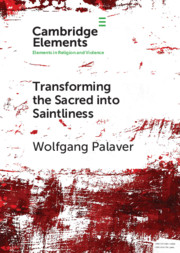Element contents
Transforming the Sacred into Saintliness
Published online by Cambridge University Press: 30 December 2020
Summary
- Type
- Element
- Information
- Online ISBN: 9781108610384Publisher: Cambridge University PressPrint publication: 04 February 2021
References
- 15
- Cited by

